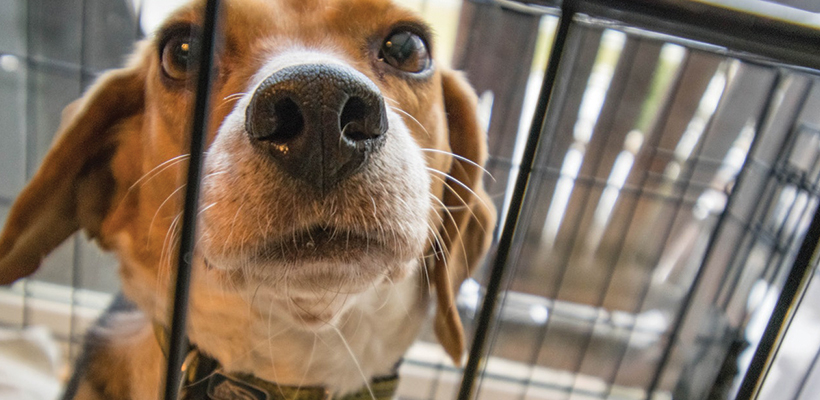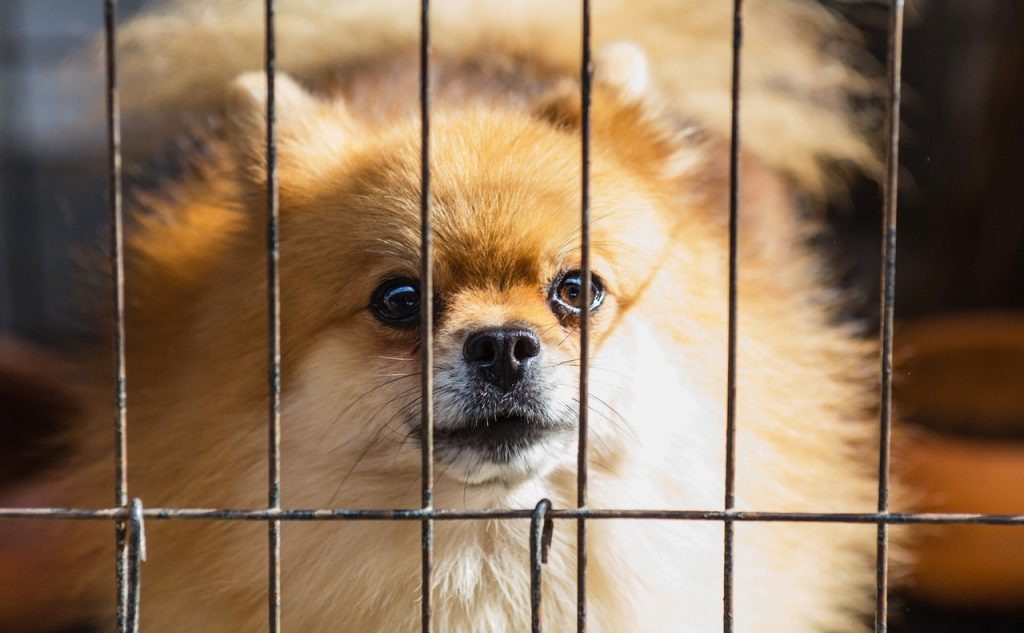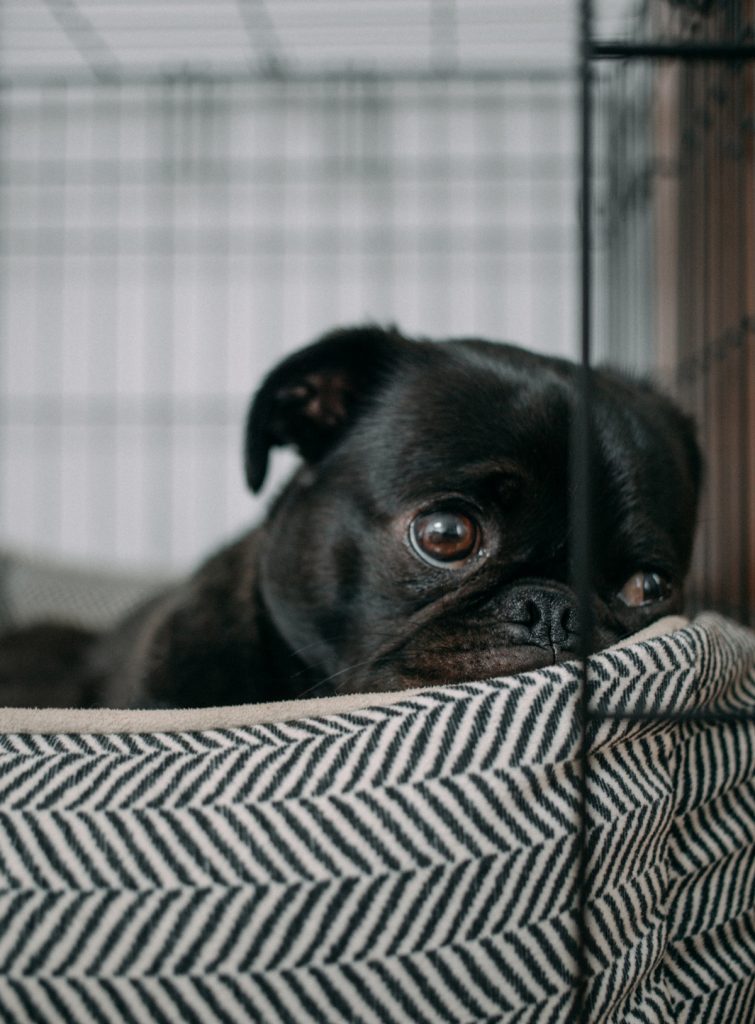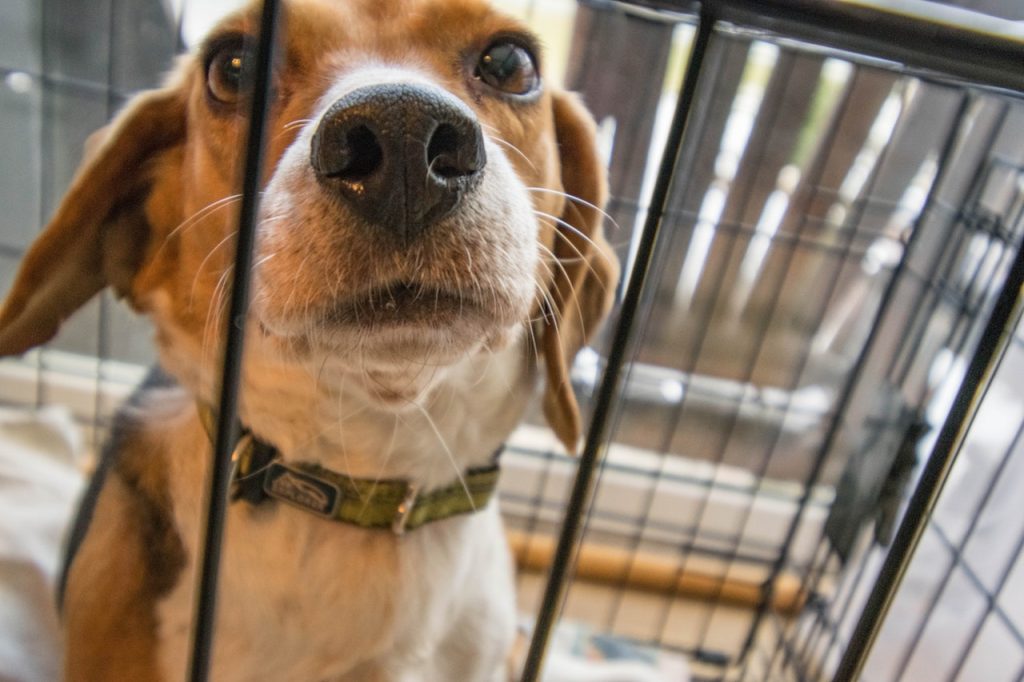
This article is contributed by guest writer, Richard (Petshaunt.com).
How to Teach Your Dog to Love His Crate
Your furry friend needs to learn to love his crate as it will provide him with a secure area that is uniquely his own. It will allow him a place to wander to for some peace, and it has been proven to reduce anxiety when he is left alone in the house as dogs are naturally den animals.
It will also be a lifesaver for you as it will keep your pet from getting into mischief when you cannot supervise him directly. Additional, it assists in housetraining the dog as he will ideally not soil the place he sleeps. It has also been seen to limit transmission of diseases.
Again, this will keep his fur, dander, and dirt from moving all around the house even if for just a little bit, and this will help alleviate allergies. A crate may also be used when traveling in the car or other means of transport. This process of crate training will however not be easy as it will require persistence and a lot of encouragement.

Photo Credit: it’s me neosiam via Pexels
Ensure that the crate suits his needs
The process starts with picking an appropriate crate for your little buddy. Check to make sure the crate fits his size. He should be able to have enough headroom to stand and turn in the crate. Throw in an appropriate sized and comfy mattress. Place the crate in a place you have designated as the rest area but make sure not to keep him away from everyone so that he knows he is still a part of the family.
Make the crate welcoming
Cover the crate with his favorite blanket to give him something familiar to ease him up. If he, however, seems uncomfortable with the darkness, you can remove it and place it under the crate. You could leave his favorite toys within the crate or even leave a few treats to make him happy and comfortable in the space.
You could also leave one of your old t-shirts with your scent on it to soothe him. Consistently reassure him during the initial stages of crate training by petting him and talking to him. Allow him to build his trust by walking into and out of the crate willingly until he is not frightened or scared.
Gradually introduce the crate
For this, feel free to be a little cheeky, leave the crate in his favorite spot and allow him to explore it at his own pleasure. Reward him and shower him with praises if he looks at, enters or even sniffs at the crate to nudge him along.
Pick moments when he is tired and thus not fussy for instance after playtime or after taking him for a walk. Occasionally sit next to the crate and pet him, then gradually leave him. If he decides to follow you, that’s just fine, and if he stays then, that is even better.

Photo Credit: Charles via Unsplash
Reward voluntary use of the crate
You could lead him into the crate with a treat or toy of sorts and toss it into the crate then praise him when he enters the crate to retrieve his goodies. If at any point in the day he decides to enter the crate reward him with treats and praise this behavior to reinforce it. Also, describe the crate with complements to encourage him in.
Pair the request with the entry into the crate
Find a short phrase such as ‘Go to your space’ or even ‘crate’ and pair it with entry into the crate. If he enters the crate at your request remember to reward and praise him immediately. Additionally, remember to stick with the phrase when referencing entry into the crate.
When the dog understands the request, pair it with another for instance ‘stay down’ to keep him in place until you are ready to release him. As you open the door, talk to him to soothe his nerves.
Be sure to take him out to stretch his legs and explore and also for nature calls. It is advised not to take him out of the crate each time he whines but once he gets used to the crate, take him out only when he is calm so as not to encourage the whining.
Spread out training sessions throughout the day
Repeat the request-reward procedure throughout the day each time reinforcing the behavior. This repetitive training will build a habit if done regularly. Increase the duration of him gradually in the crate by locking the door when he dozes off or is distracted and opening the door when he is ready to leave.
If he is anxious about the door-closing leave this for a while until he gets comfortable being inside for longer periods. You could then close the door and remain in the vicinity within sight to keep him from getting upset.

Photo Credit: Hilary Halliwell via Pexels
Be sure not to use the crate as punishment
You want the process to be a positive experience, and you should therefore not scold him then send him to his crate as this will be understood as a punishment. The crate should be considered a safe, relaxing, and comfortable place rather than a little prison. Also, try not to scold and punish him for avoiding the crate.
Final Words
Remember this training will take a while and requires some energy so grab a drink and enjoy the process. The journey will take your time so pick moments when you are not exhausted or stressed. Remember; eventually, he will learn to love the crate, and it is only a matter of time!
An older dog may take a little longer to learn as he has already developed other habits so pack up a bit more patience for him. Use the age to determine how long the dog can stay in the crate and know that beyond this time he will become agitated and distressed. A five-month-old dog should be in the crate for a maximum of 5 hours. All canines should not be in a crate for more than eight hours. This is because long-term crate imprisonment can lead to behavioral and emotional deterioration.

Jean Jenn
November 2, 2019 at 1:06 AMNO dogs that are housebroken should be in crates. Certainly not routinely!
Maybe 30-35 years ago there were NO crates being routinely used, and they still aren’t used much if at all in England and Europe.
They want you to think of them as a den……ever heard of a den with four locked doors?